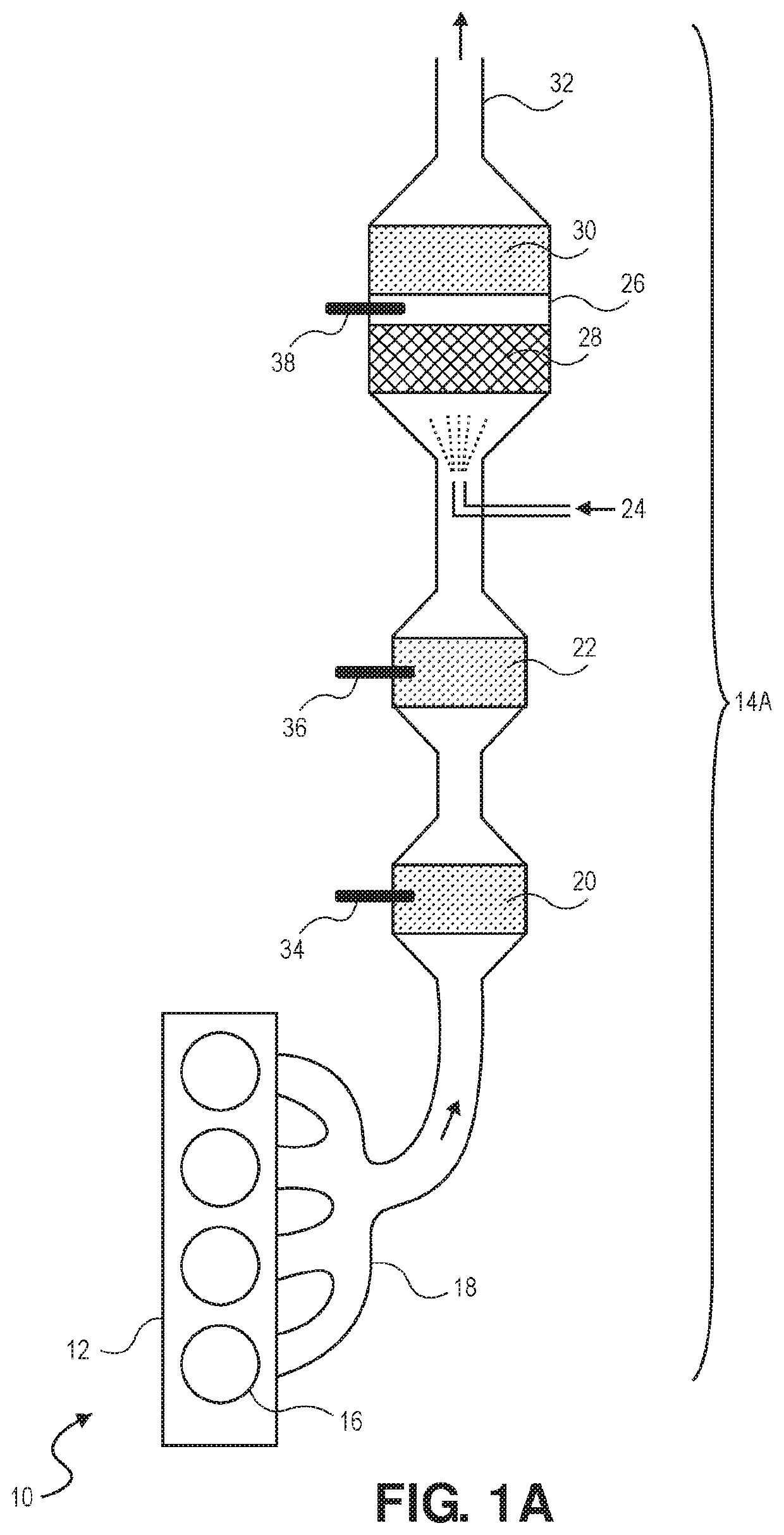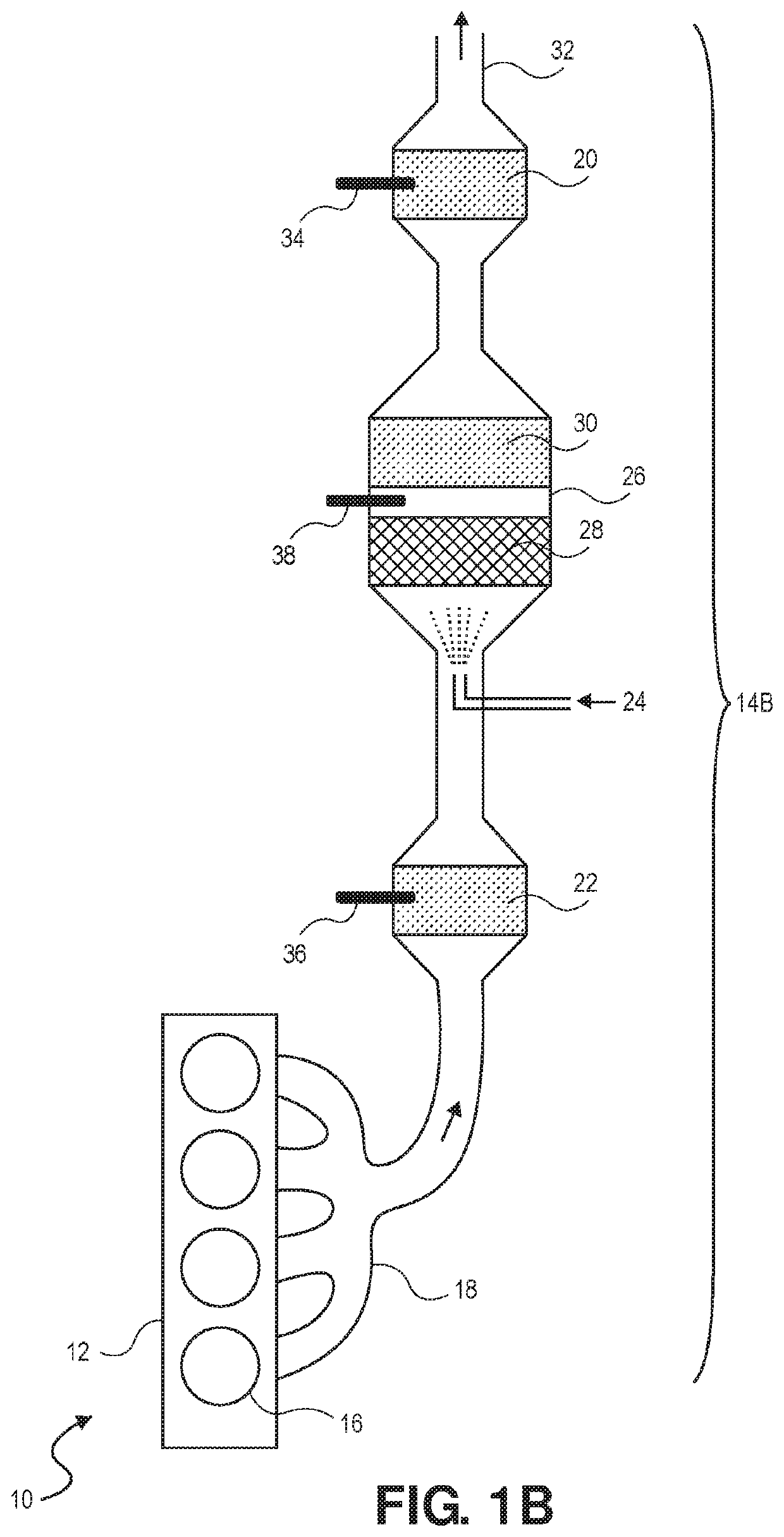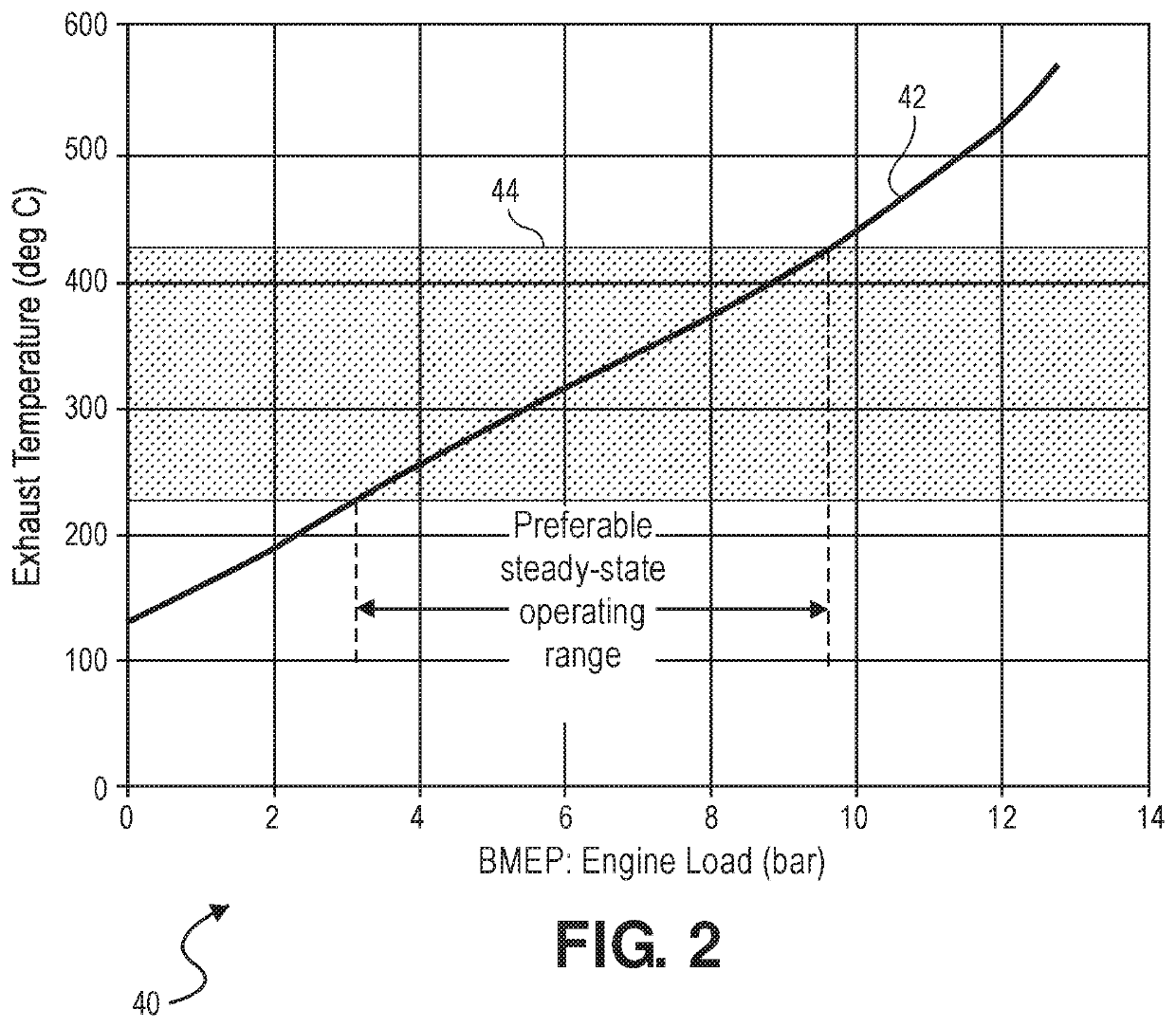Separately determining firing density and pumping density during firing density transitions for a lean-burn internal combustion engine
a control system and internal combustion engine technology, applied in the direction of machines/engines, electrical control, electric control of exhaust treatment, etc., can solve the problems of reducing the efficiency of the lean air-fuel ratio. achieve the effect of better control of the air-fuel ratio
- Summary
- Abstract
- Description
- Claims
- Application Information
AI Technical Summary
Benefits of technology
Problems solved by technology
Method used
Image
Examples
Embodiment Construction
[0048]The present invention relates to skip fire control that relies on a combination of a torque request, an exhaust temperature, an NVH level, and an air-fuel ratio in determining a firing density (FD) of an internal combustion engine. The internal combustion engine may be a lean burn engine and may be used to power a vehicle. In addition, the present invention also is directed to using different types of working chamber valve control during skipped firing opportunities that either allow or prevent pumping air through the engine to control and modulate exhaust gas temperature in aftertreatment systems.
Skip Fire Engine Control
[0049]Skip fire engine control contemplates selectively skipping the firing of certain cylinders during selected firing opportunities. Thus, for a given effective engine displacement that is less than the full displacement of the engine, a particular cylinder may be successively fired during one firing opportunity, skipped during the next firing opportunity an...
PUM
 Login to View More
Login to View More Abstract
Description
Claims
Application Information
 Login to View More
Login to View More - R&D
- Intellectual Property
- Life Sciences
- Materials
- Tech Scout
- Unparalleled Data Quality
- Higher Quality Content
- 60% Fewer Hallucinations
Browse by: Latest US Patents, China's latest patents, Technical Efficacy Thesaurus, Application Domain, Technology Topic, Popular Technical Reports.
© 2025 PatSnap. All rights reserved.Legal|Privacy policy|Modern Slavery Act Transparency Statement|Sitemap|About US| Contact US: help@patsnap.com



